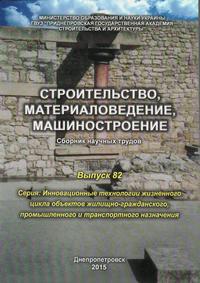Integrated use of agricultural waste for the sustainable development of agricultural socio-ecocomplexes as closed ecosystem
Keywords:
Agricultural waste, byproducts, sustainable development, closed ecosystemAbstract
Every year, the European Union will yield about 1.3 billion tons of waste, of which about 700 million make agricultural residues. The problem of disposal of these by-products manufacturing requires effective solutions. To date, much of the waste incineration plant is exposed, which is not consistent with the concept of sustainable development. The work is devoted to the vital processes of human and industrial activity, taking into account the life cycle from the standpoint of the concept of sustainable development. Such an approach aims to meet the vital needs of human rights and the integration of secure production environment, improve the quality of life of the rural population. Goal. Consideration of the comprehensive utilization of agricultural wastes and by-products for the sustainable development of the agricultural sector and the residential areas as a closed ecosystem. Scientific novelty and practical significance of this work lies in the possibility of creating environmental and friendly to human and nature habitats through the use of agricultural waste as a renewable, cheap in construction, operation and disposal of environmentally friendly building materials; ensuring high energy efficiency of residential and industrial segments of the agricultural sector through the use of plant agricultural run as efficient thermal insulation of the building envelope and renewable autonomous energy sources, waste products - as a modifier of energy fuel oil; minimizing impacts on natural ecosystems through innovative pyrolysis technology of solid waste disposal, industrial waste; maintaining the direction of organic farming by restoring vermicompost technology intensive mineralization of plant agricultural run-off, biogas products, products of sewage treatment plants, pyrolysis products of organic waste. Conclusions. Thanks to the research and development of scientific bases of technologies of recycling of agricultural wastes and by-products (plant, animal, any hazardous waste) creates a vicious cycle of agricultural and municipal services within the agrarian socioecocomplexes.Downloads
Issue
Section
Innovative lifecycle technology of housing and civil, industrial and transportation purposes
License
Редакція Видання категорично засуджує прояви плагіату в статтях та вживає всіх можливих заходів для його недопущення. Плагіат розглядається як форма порушення авторських прав і наукової етики.
При виявлені у статті більш ніж 25% запозиченого тексту без відповідних посилань та використання лапок, стаття кваліфікується як така, що містить плагіат. У цьому випадку стаття більше не розглядається редакцією, а автор отримує перше попередження.
Автори, в статтях яких повторно виявлено плагіат, не зможуть публікуватися в усіх журналах Видавництва ДВНЗ «Придніпровська державна академія будівництва та архітектури».
Автори, які публікуються у цьому журналі, погоджуються з наступними умовами:
- Автори залишають за собою право на авторство своєї роботи та передають журналу право першої публікації цієї роботи на умовах ліцензії Creative Commons Attribution License, котра дозволяє іншим особам вільно розповсюджувати опубліковану роботу з обов'язковим посиланням на авторів оригінальної роботи та першу публікацію роботи у цьому журналі.
- Автори мають право укладати самостійні додаткові угоди щодо неексклюзивного розповсюдження роботи у тому вигляді, в якому вона була опублікована цим журналом (наприклад, розміщувати роботу в електронному сховищі установи або публікувати у складі монографії), за умови збереження посилання на першу публікацію роботи у цьому журналі.
- Політика журналу дозволяє і заохочує розміщення авторами в мережі Інтернет (наприклад, у сховищах установ або на особистих веб-сайтах) рукопису роботи, як до подання цього рукопису до редакції, так і під час його редакційного опрацювання, оскільки це сприяє виникненню продуктивної наукової дискусії та позитивно позначається на оперативності та динаміці цитування опублікованої роботи (див. The Effect of Open Access).

